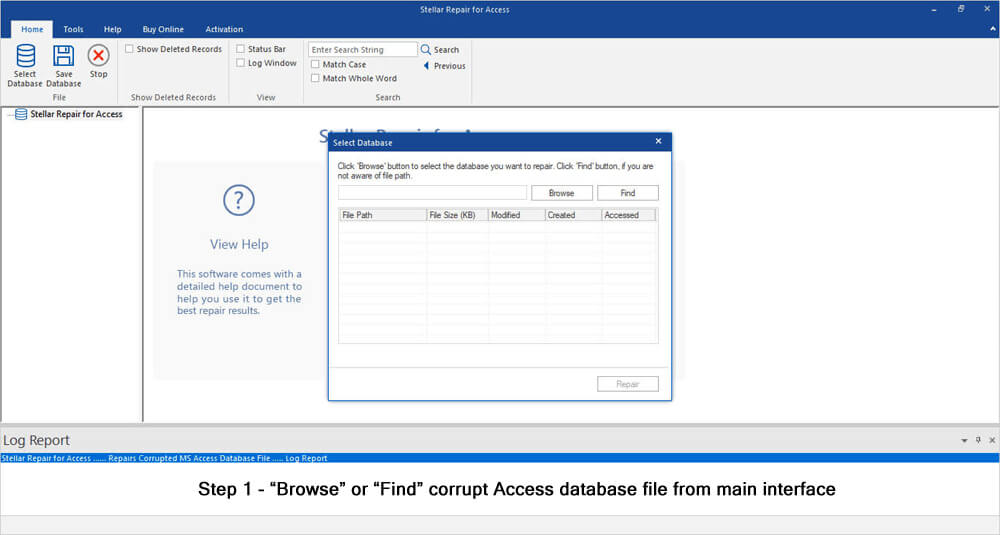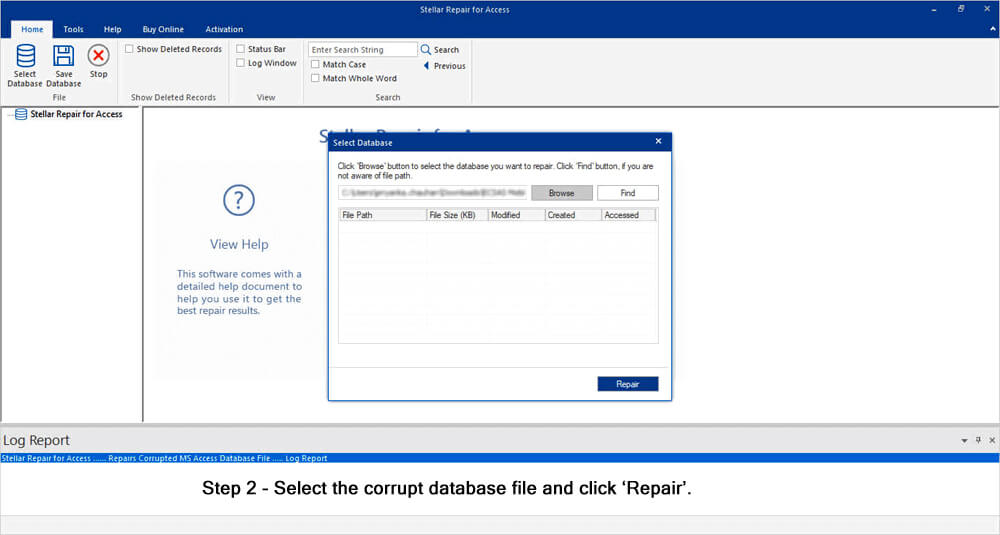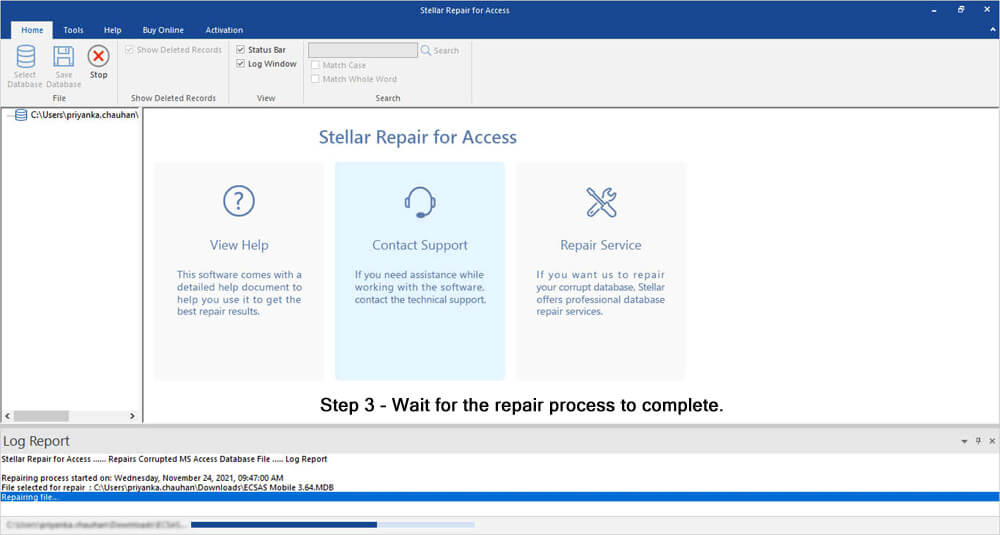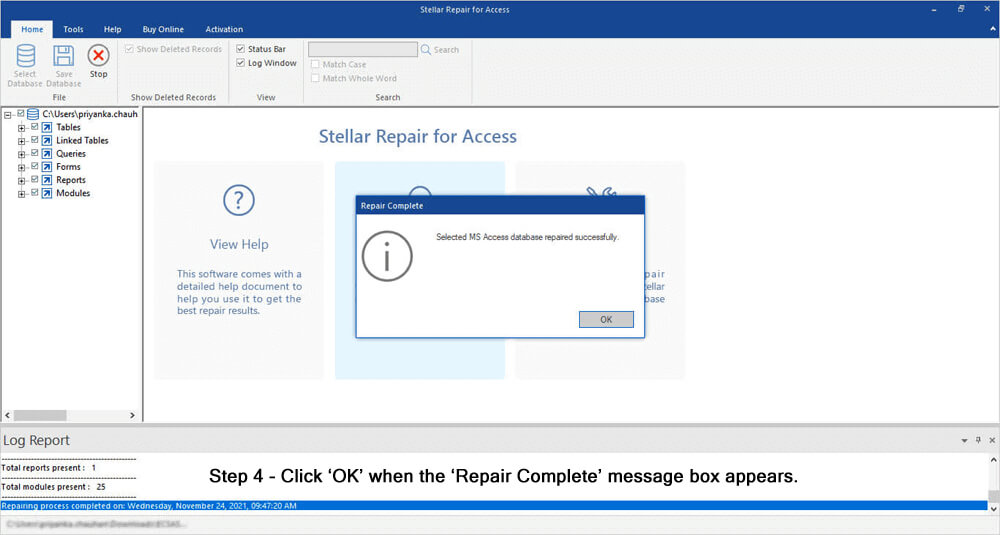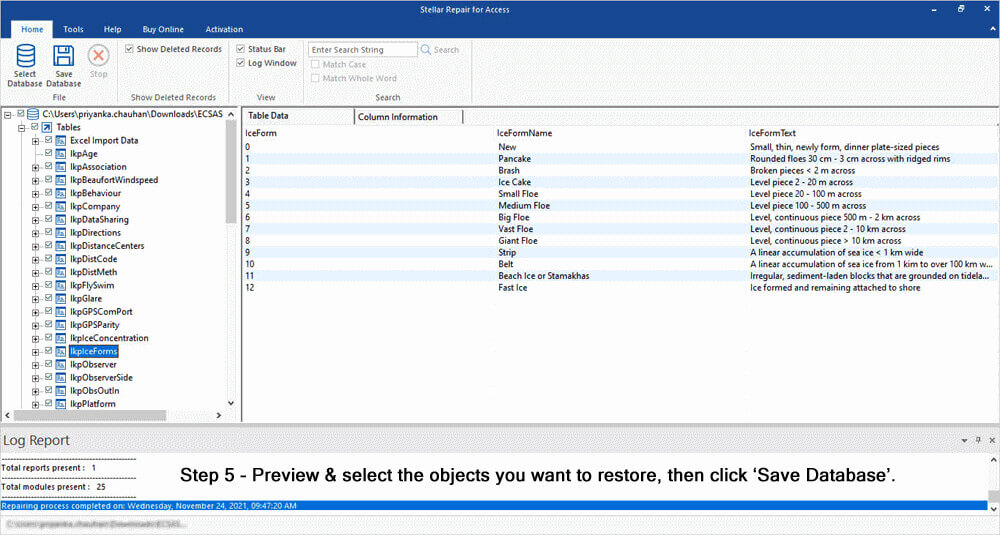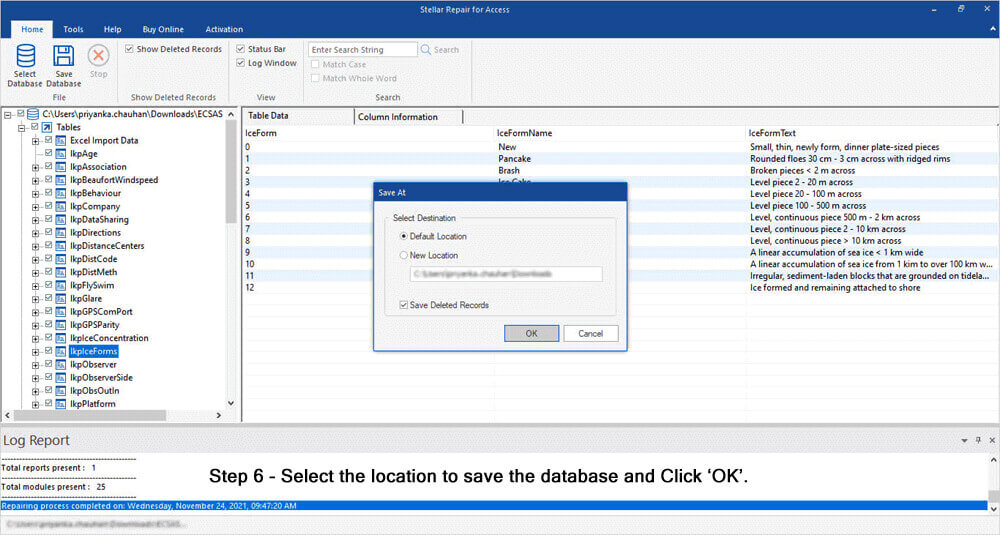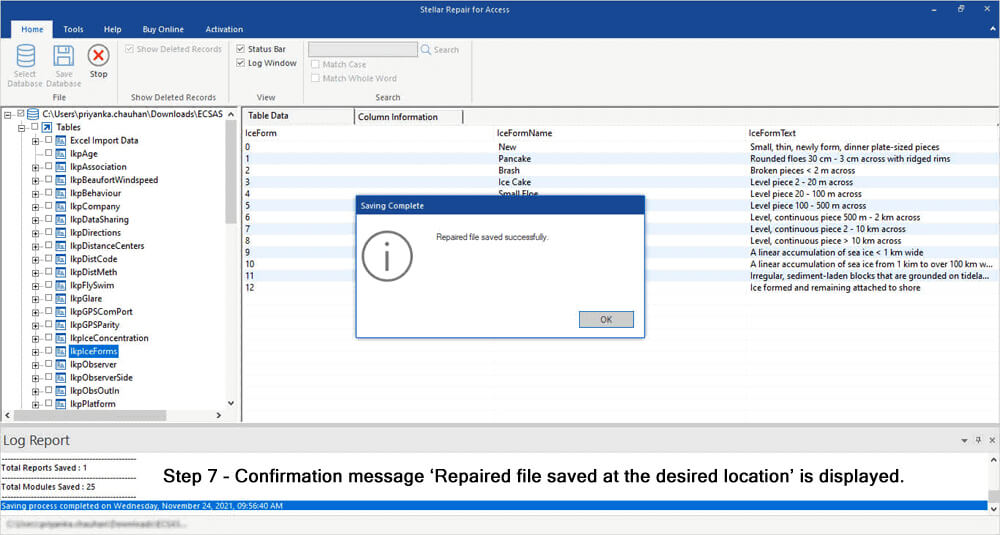Does your MS Access application frequently show error text notification regarding damage of your Access Macros And Modules?
If yes then don’t rush here and there for the solution. This tutorial is written with the main prospective of providing solutions to repair damaged access modules and macros objects. So, enjoy reading this post till the end to know the best solution to fix this issue.
Best Software To Repair Damaged/Corrupted Macros And Modules
If you don’t want to go through the lengthy manual fixes to repair corrupt Access database macros or repair damaged MS Access modules then this solution is best for you.
Just try the Access Repair And Recovery Tool to repair corrupt macros or to recover damaged MS Access modules and solutions of the MS Access Database issue. There are various advantages of using the tool such as its repair corrupted/damaged .accdb and .mdb files, restore each and every data and such as reports, tables, queries, macros, forms, etc..

* By clicking the Download button above and installing Stellar Repair for Access (14.8 MB), I acknowledge that I have read and agree to the End User License Agreement and Privacy Policy of this site.
If you want to restore all your valuable data back from a corrupted access file then you need to use MS Access File Repair Tool, as this is a very helpful tool to fix any kind of error that occurred and can fix any type of corrupted access database. The software allows you to recover permanently deleted data from the MDB file.
Steps To Use Access Repair and Recovery Tool
What’s The Issue?
Today high-level corporate industries and organizations deal with huge amounts of data on an everyday basis. They have to keep thousands of employee daily reports and records of several transactions works and many more things. all such data have to be managed in such a manner that users can fetch nay form of data or details from that huge cluster easily.
This MS Access provides a data management system that gives users the flexibility to update, remove, or edit any information whenever needed. It also allows users to create forms, Tables, reports, queries, macros, and VBA modules that cover front end (load/entry) and back end (reporting/maintenance). However, as we all know error can occur even in the most secure of user defenses and MS Access is not an exception to this.
The most vulnerable point of MS access; where most of the error occurs is Macros. While macros introduce a level of automation within Access, scripts that make execution of macros possible can get corrupt easily and leads to some unexpected errors. One of the most commonly occurring Access Macro errors is “Action failed error: 2950”. Likewise, you must get an issue with Access modules.
Before approaching the fixes to solve damaged Access macros and modules issue, first discuss what’s the role of these macros and modules in Access.
Let us discover the causes behind MS Access macros corruption OR Acces module corruption and a few easy solutions to fix it.
Role Of Macros And Modules In Access
Macro
Access macro tool allows you to automate tasks and add functionality to your reports, forms, and controls. Suppose, if you need to add a command button in the form, you associate the button’s OnClick event to a macro and the macro contains the commands regarding the tasks that you want to perform each time when it is been clicked.
Macros enable you to add functionality to forms, reports, and controls without writing code in a visual basic for application (VBA) module. Macros offer a subset of the commands that are available in VBA and users find it easier to build a macro than to write VBA code.
Modules
Modules are the places where you store VBA code. but you can‘t record a macro in MS access, so modules are the place where you will get all the VBA code you have written by yourself and also the code written by various wizards of Access.
A module is a collection of declaration, statements, and procedures stored together as a unit. Modules are very much similar to macros as they are objects that add functionality to the database. However, when you create macros in Access by selecting from a list of macro actions, VBA programming language is used to write modules.
What Are The Reasons For Access Macros And Modules Damage?
Reasons for Access macros and modules damages are so many but here we listed done some most common and reasonable one.
Data Synchronization:
Data synchronization is the best way to sync your huge data between two or more devices but if it won’t be done correctly and then it can make your data inaccessible.
Virus Attack:
Virus attack is the most common reason for corruption for an Access database and as a result of which its object got damaged. It easily corrupts your files or databases by deleting some of its parts or by overwriting the file.
Hardware Failure:
Sometimes hardware failure during data saving or transferring is also the reason behind such Access objects damage. At this time, there are great chances of your database getting corrupt.
System Crash:
Sudden or abrupt system shutdowns also be the reason for damaging your Access macros and modules or even lost your data forever.
5 Fixes To Resolve Corrupt/Damaged Access Macros and Module
If the problem in your database is because of the corrupted macros or modules then here are a few fixes that you can try to fix this issue. Before trying to fix this up, you must be aware that the damage could be in the actual macro and module or it could be a problem of the content of macros and module. The simplest option then would be to delete the existing macro or modules and import it from the backup copy of the database so as to recover MDB data and continue using it. As another alternative solution, you can also try these solutions:
Below here are some best fixes to resolve this damaged issue. you can apply any of the following.
SOLUTION 1: Enable the Database for Current Session
Well, this method of enabling the database is for the current session only. The database will be disabled as soon as you initiate a Close Database Command. Just the follow the steps mentioned below:
- From the access message bar, click to the Options tab.
- This will open the MS Office Security Options dialog box. Here click on enable this content option.
- At last click to the OK option.
These steps should be repeated each time you open the database.
SOLUTION 2: Move the Database to a Trusted Location
In order to shift the database to the trusted location, you must first find out the trusted location on your system. To find so, perform the following steps:
- Tap on the MS Office button -> Access Options -> Trust Center -> Trust Center Settings
- Then go to the trusted location option and perform the following steps:
- Note the path of the trusted location listed.
- Now add a new trusted location. For this, make a tap to the add new location and then specify the path of the location that you want to add.
Once you get the trusted location list, move the access database to any one of them.
SOLUTION 3: Create New Macros Or Module
If you suspect that the damage is in your macro or module; you could make a new macro or module and then copy the undamaged contents of the original macros or module into it.
SOLUTION 4: Non-ASCII Characters Removal
Sometimes the reason for the damage is also the non-ASCII characters that are creeping into the module. So try to save the file as the text file and remove all the illegal entries, if it contains. Save the file and reload it.
Conclusion:
Access allows you to repair damaged Access databases using the Compact And Repair inbuilt utility tool in case of damaged Access macros and modules repair. With this inbuilt utility tool, you can easily fix minor issues of your Access database.
But if the database is severely got damaged then this inbuilt tool won’t work. To make a successful restoration of the database, you are advised to make a regular backup of your database. Mainly, when you are making constant use of them.
 Still having issues? Fix them with this Access repair tool:
Still having issues? Fix them with this Access repair tool: This software repairs & restores all ACCDB/MDB objects including tables, reports, queries, records, forms, and indexes along with modules, macros, and other stuffs effectively.
- Download Stellar Repair for Access rated Great on Cnet (download starts on this page).
- Click Browse and Search option to locate corrupt Access database.
- Click Repair button to repair & preview the database objects.
